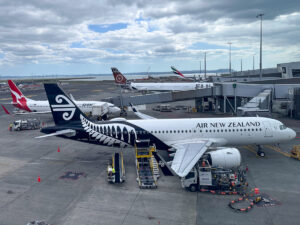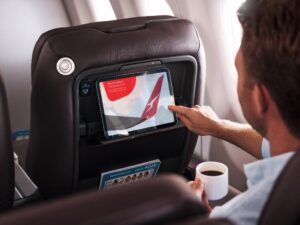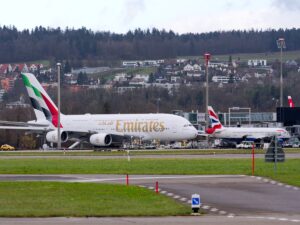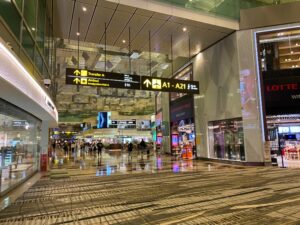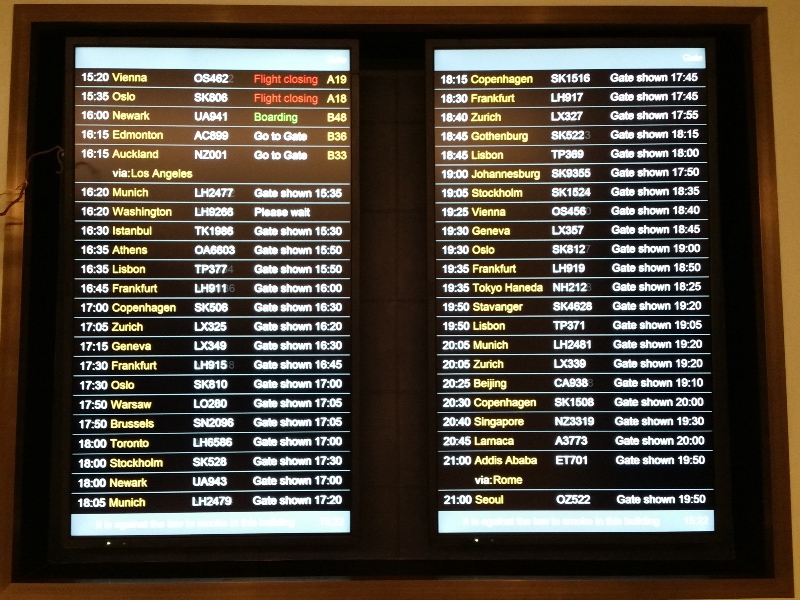
Ever noticed that some airports hide gate numbers from their flight information display boards until as little as 30 minutes before departure? It’s not an accident – some airports have decided to intentionally make people wait until boarding is about to begin to learn where their flight will be leaving from.
This tactic is more commonly employed at airport terminals with a larger concentration of low-cost airlines. For example, Melbourne Airport’s Terminal 4 (used by Jetstar and Rex) hides gate information until the gate “opens”. But it’s not just low-cost carrier terminals. Auckland Airport uses the same strategy in its international terminal, and it’s particularly prevalent in Europe where many UK airports – even London Heathrow – do exactly the same thing.
There is some logic behind this, but let’s be clear – it’s designed to benefit the airports, not flyers!
So, why do airports hide gate numbers?
One obvious reason not to display airport gate numbers until boarding commences is that gate numbers can change. If a last-minute gate change is necessary, this minimises passenger confusion and inconvenience as they haven’t already been told to go to a different gate. But that’s not the main reason.
Most frequent flyers want their passage through the airport to be as straightforward as possible. The shorter the walk to the boarding gate (or lounge), the better. But airports have different priorities.
Airports have many different revenue sources. These include things like landing fees, passenger movement charges, advertising billboards and the (often exorbitant) carpark fees. But part of the airport business model often also sees the airport operator earning a commission on sales made by the retailers within the airport. The actual commission amount varies depending on the type of retailer, with commissions on duty-free sales generally higher than food & beverage purchases, for example.
This model is not necessarily used by every airport, and there may be other factors that contribute to the total fees paid by retailers to the airport operator. But where this is the case, clearly it’s in the airport’s best interests to maximise the amount of money spent by passengers waiting for their flights.
One way to maximise retail sales is to maximise the amount of time passengers have to spend in the airport, where they’re essentially a captive market. And if passengers don’t know which gate their flight will be leaving from, this encourages them to spend more time “dwelling” around the main shopping and food court areas of the airport.
This strategy is particularly useful at places like Melbourne’s Terminal 4. There are almost no shops (and minimal seating) around the Jetstar gates, which are a 5-10 minute walk from the main food court. The airport would prefer that passengers don’t just go straight to the gate, where they are unlikely to buy anything. (If everyone did this, the Jetstar gates would also be chronically overcrowded.)
Another reason this tactic is more common at airports or terminals serving a large number of low-cost carriers is that these airlines might pay lower airport charges. Airports often make concessions and charge less to low-cost airlines on the basis that these airlines will stimulate demand and bring in extra passengers that will also spend money at the airport. As budget airlines are more likely to attract leisure flyers who are likely to spend more money at the airport than frequent business travellers, there is some sense to this.
Sometimes airports push it too far
While delaying gate information can increase dwell time in the airport’s shops, it can also verge on being ridiculous. Flying out of Toulouse–Blagnac Airport in France last year, I found that my flight’s boarding gate was only revealed 5 minutes before boarding started. The gate was a 10-minute walk away.
Airports need to strike a balance between maximising their own revenue, and giving passengers enough time and information so they don’t miss their flights. This kind of thing is particularly frustrating for airlines when it directly contributes to flights departing late or having to offload lost passengers.
Other ways to find your flight’s gate number
If you’re at an airport that doesn’t provide gate information, don’t worry. If the gate number is also not listed on your boarding pass, you can often find it with a simple Google search. Just enter the flight number into Google and the departure and arrival times and gates will usually appear!
And on the off chance that googling your flight number fails to show the gate number, you could try finding out which aircraft will be operating your flight using a website like FlightAware or Flightradar24. Then, track the plane’s inbound flight and see which gate it will be arriving at.
